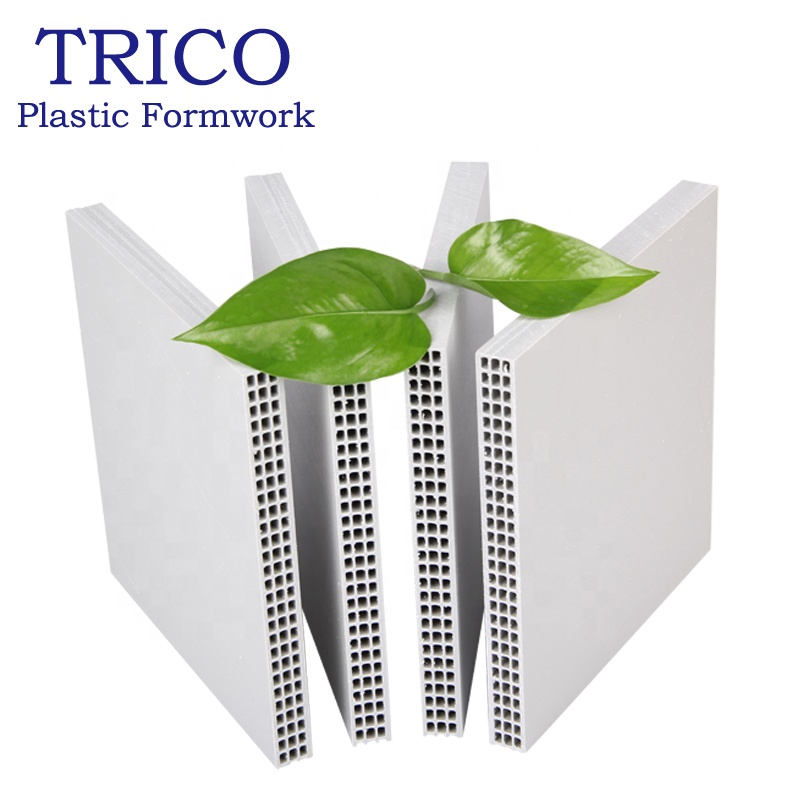When Plastic Formwork is installed horizontally, try to measure the plastic formwork with a steel ruler, nail 3-4 small nails around the uniform height, and put the steel strip on the nails when the steel strip is loaded to keep the steel Installation level of the belt.
Plastic formwork is an indispensable important product in the construction field. Its practicality and safety and the reliability of plastic formwork are bound to bring relative effects to users who use it. Therefore, when choosing and purchasing plastic formwork, In order to make the products you buy qualified and have quality assurance, you must carefully check the template products, and carefully ask the manufacturer about its reliability, use effect, and confusion, as well as its production process and Investigate the manufacturing level to ensure that it can achieve excellent use results and not allow the project to spread. After the plastic formwork is closed and reinforced, the bottom circular plane should be spaced 0.5-1 cm away from the ground as far as possible, and the concrete should be filled with concrete.
Plastic Formwork
Plastic formwork is at the construction site. Pay attention that the plastic formwork should be stored on a flat and dry ground. The bottom should be no less than 3 pieces of 10 * 10cm horizontal wooden supports. Avoid storing it in a place of temperature and humidity. When installing the screws, the tightness of each screw must be consistent, so as to ensure the consistency of the tightness of the steel strip and the safety of the construction. Try to unify the pillars with unified personal reinforcement screws.
The following Scaffolding Accessories supplier will introduce the precautions for installing building templates:
1. Plastic formwork is the same as wood formwork. After being delivered, it is transported to the construction site for storage and placed on the flat place.
2. No oiling is required before use. Cover the cable with soft material during lifting to prevent damage.
3. If different specifications are required, they can be booked to reduce the waste of plates.
4. For cast-in-place plates, the bottom interval can be 20-30CM, and the beam-column plate interval is 50-60CM.
5. The end holes of the board must be sealed with rubber strips so that the mortar cannot enter the holes, otherwise it is easy to cause disassembly difficulties and even cause product damage.
6. Nail the nail as far as possible with a small vertical bar and the nail should not be suspended.
7. The length of the nail should not be too long, generally about 30-35MM can be, the nail is too long, easy to affect the removal of the mold.
8. The joints of the two boards must be sealed with rubber strips to prevent the infiltration of the mortar from affecting the mold removal.
9. When removing the mold, it must be carried out from a small piece at one end, and the template is removed while removing the support to prevent it from falling over a large area.
10. Places where nails are nailed. If you do not use them next time, seal them with adhesive tape.
11. Try not to make the corners directly hit the ground, and at the same time try to make sure that the hard construction waste on the ground, such as iron nails, waste steel bars, etc., is clean, to prevent the directly falling formwork from falling on the hard construction waste and causing plane damage, affecting the next use.
12. During the demolishing process, the workers are required to dismantle from the colleagues at both ends of the scaffolding and fall at the same time. Be sure to keep it horizontal during the fall, and do not allow the corners to fall vertically against the ground.
13. Nail and mortar need to be cleaned in time before dismantled plastic plastic formwork.
14. This product is suitable for minus 40 degrees to 70 degrees.
15. When plastic formwork has electric welding operation, the surface of the template can be sprayed with water to prevent large pieces of welding slag from burning the surface.


















